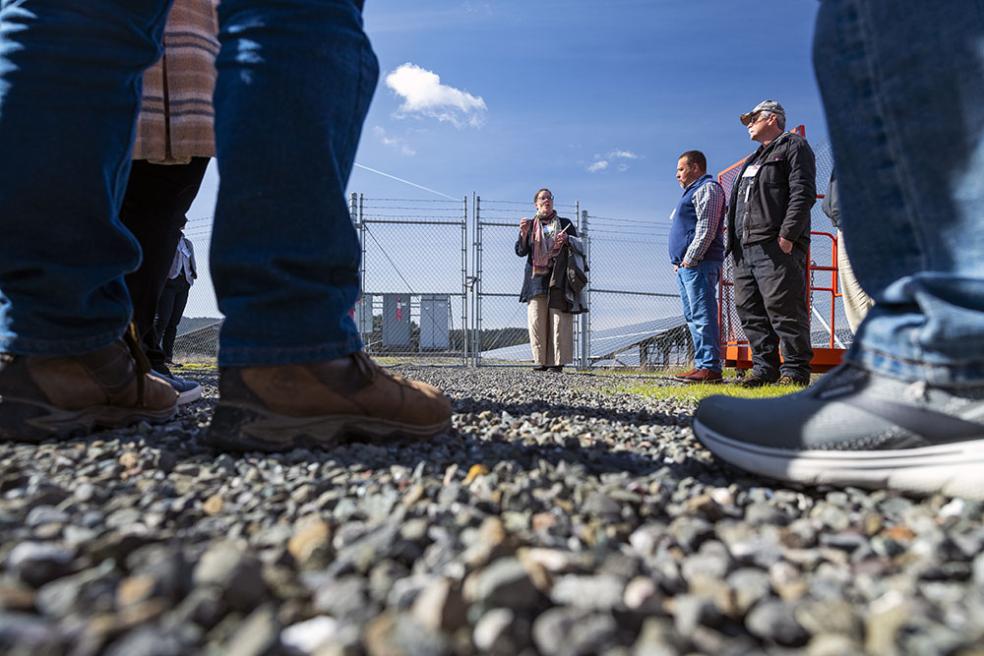
While Californians face increased fire risk, air pollution, and aging energy infrastructure, Tribal and rural communities remain especially vulnerable. The SAFE project—Smoke, Air, Fire, Energy—is a collaboration between the Blue Lake Rancheria Tribe, the Karuk Department of Natural Resources, and Cal Poly Humboldt’s Schatz Energy Research Center to develop solutions to these challenges.
On March 1, students and faculty, Tribal leaders and community members, and representatives from federal and state agencies gathered at the Blue Lake Rancheria for an all-day SAFE symposium on Rural and Tribal Resilience: Strategies for Action.
The symposium showcased collaborative solutions for community resilience, including the deployment of microgrids and air quality monitoring systems, and integration with prescribed and cultural fire practices. Panel discussions addressed the four prongs of the SAFE project: “Living with Fire and Smoke,” “Safe Air for Everyone,” and “Building Community Energy Sovereignty.” There were also presentations on Women’s TREX—an Indigenous women-in-fire training exchange–and on upcoming microgrid opportunities.
Afternoon roundtable discussions gave all participants the opportunity to problem solve together on topics including offshore wind, broadband internet, air quality, and energy resilience.
For Cal Poly Humboldt students, these discussions provided opportunities to integrate their in-class learning with practical applications. Kyle Wolfe, a student and research assistant with the Environmental Resources Engineering department, was most excited to learn about the Rancheria's microgrids, and how Tribal and state leaders are working together to bring energy sovereignty to more Indigenous communities.
“I think it's incredibly important to increase the accessibility of independent energy generation and management for these communities,” he added, “so I am thrilled to see pathways being foraged through the SAFE Project,” Wolfe says.
Collaboration is a primary focus of the SAFE project and a main goal of the symposium. Schatz research engineer Carisse Geronimo says: “We aimed to create an inclusive space for collaboration and discussion between all kinds of attendees—including students, Tribal leaders, subject matter experts and policymakers. We wanted to make opportunities for these people to sit next to each other and connect.”
SAFE project manager Tanya Garcia adds that “the success of the event exemplifies the need for more community participatory research and spaces that allow for inclusive dialogues and knowledge sharing.”
For more information about the SAFE Symposium and a collection of resources from the event, visit: https://padlet.com/hguynup/safe-symposium-resource-collection-c8166yq72d31ngjy
The SAFE project is supported by California Strategic Growth Council’s Climate Change Research Program with funds from California Climate Investments—Cap-and-Trade Dollars at Work.